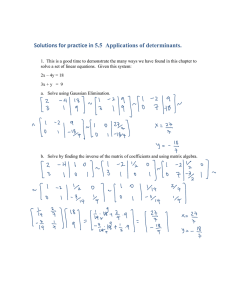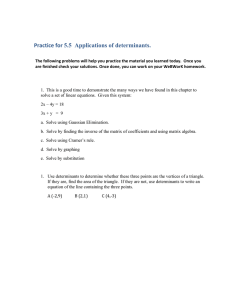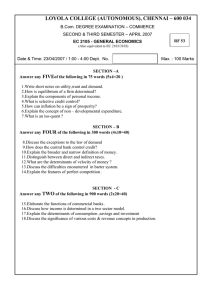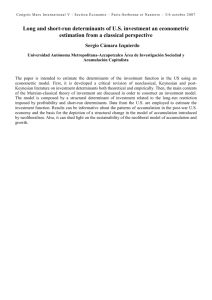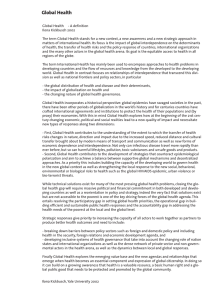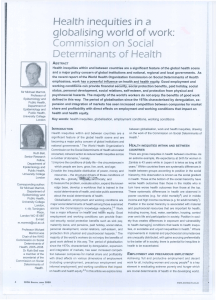The Social Lives of Health and Medicine
advertisement
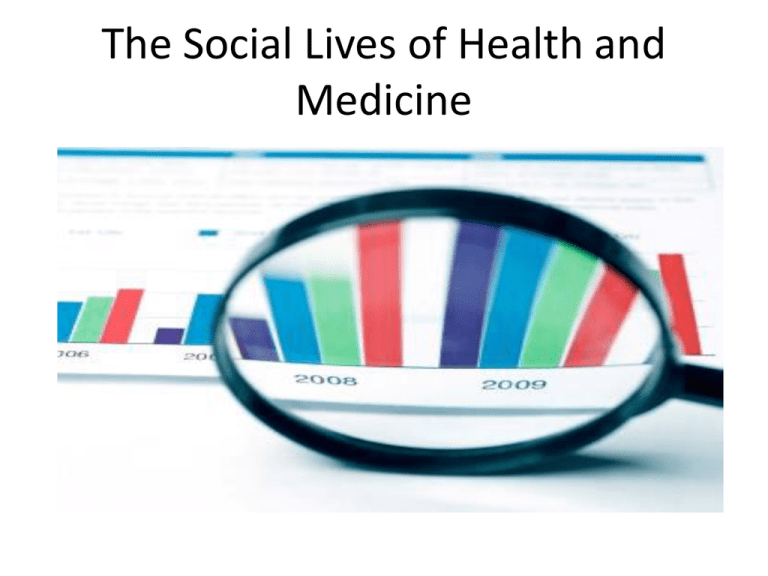
The Social Lives of Health and Medicine A new global agenda for health equity • Our children have dramatically different life chances depending on where they were born. – Japan or Sweden 80 years; in Brazil, 72 years; India, 63 years; and in one of several African countries, fewer than 50 years. • In countries at all levels of income, health and illness follow a social gradient – the lower the socioeconomic position, the worse the health. WHO (2009) Inequities and Inequalities • It does not have to be this way and it is not right that it should be like this • Where systematic differences in health are judged to be avoidable by reasonable action they are, quite simply, unfair. • It is this that we label health inequity. WHO (2009) “It’s Not the Germs!” • Etiology – disease causation – Germs, nature, society, individual factors, supernature • Ethnoetiology – local knowledge & practices related to theories of disease causation – Agents (personalistic) – Contextual (naturalistic) – Internalizing (physiological/internal mechanisms) – Externalizing (events outside the body/external pathogenic agencies) The Blane Report (1977) • 4 explanations for patterns of inequality in health – Statistical Artefacts: modes of measurement – Outcome of natural or social selection (?) • Health experience upward mobility & unhealthy downward – Behavioral or cultural practices – Class and health are linked by structural factors WHO on Social Determinants of Health • health inequities are caused by the unequal distribution of power, income, goods, and services, globally and nationally, the consequent unfairness in the immediate, visible circumstances of peoples lives – their access to health care, schools, and education, their conditions of work and leisure, their homes, communities, towns, or cities – and their chances of leading a flourishing life. • This unequal distribution of health-damaging experiences is not in any sense a ‘natural’ phenomenon but is the result of a toxic combination of poor social policies and programmes, unfair economic arrangements, and bad politics. • Together, the structural determinants and conditions of daily life constitute the social determinants of health and are responsible for a major part of health inequities between and within countries. WHO (2009) MATERIALIST/STRUCTURALIST • Emphasizes social, political, economic factors which adversely affect health • Forms of social/econ./pol. org., environment, health services, transport, economic conditions, work practices • We are born into society with a ‘material structure’ (ascribed status?) – ‘shapes us’ • Social org. rather than individual biology • Foundation for health inequalities/ disparities/population health approaches Three principles of action • Improve the conditions of daily life – the circumstances in which people are born, grow, live, work, and age. • Tackle the inequitable distribution of power, money, and resources – the structural drivers of those conditions of daily life – globally, nationally, and locally. • Measure the problem, evaluate action, expand the knowledge base, develop a workforce that is trained in the social determinants of health, and raise public awareness about the social determinants of health. WHO (2009) Social class? • How to define? What variables do we use? – Occupation, income & wealth, prestige, education, residence, ethnicity, gender, age, ? • The adjective “Class” – descriptive – collectively organized actors – people become identified independently of kinship as a constituent of class – for example, biological differences or functions as defined in the culture rather than social identities become increasingly important • Class formation – the formation of collectively organized actors • Class consciousness – the understanding of actors of their class interests • Class struggle – the practices of actors for the realization of their class interests – In contest • Interrelationships of all these How do we know social classes exist? • Social stratification • the unequal distribution of goods and services, rights and obligations, power and prestige • all attributes of positions in society, not attributes of individuals • there are significant breaks in the distribution of goods services, rights, obligations, power prestige • as a result of which are formed collectivities or groups we call strata or “class” Neoliberalism, Class, and Health • Neoliberalism – move from a bureaucratic welfare-based society toward a meritocracy – in the interests of business – based on individual and economic liberty • Health & health care consequences – Individual centric – Achieved health • Class analysis? Accounting for the Social • Social Constructivism • Social capital • In contrast to: – the ‘variable approach’ Social Constructionism • how social phenomena develop in particular social contexts • a concept or practice which may appear to be natural and obvious to those who accept it, but in reality is an invention or artifact of a particular culture or society -- SOCIAL CONSTRUCT • Social constructs -- by-products of countless human choices rather than laws resulting from divine will, nature, OR ANY OTHER EXPLANATION THAT PURPORTS OTHERWISE Deconstructing Social Constructs • uncover the ways in which individuals and groups participate in the creation of their perceived social reality • looking at the ways social phenomena are created, institutionalized, and made into tradition by humans • Socially constructed reality is seen as an ongoing, dynamic process • reality is reproduced by people acting on their interpretations and their knowledge of it. Deconstruction: Derrida • A strategy of critical analysis • understanding language as writing and how this leads to the impossibility of a straightforward theory of intentional meaning • concepts in terms of their structure and genesis • Individual language users operate within a system of meaning that is given to them from outside • Meaning is therefore not fully under the control of the individual language user Health & Medicine as Social Construct • Health & Medicine is a set of categories that filters and constructs experience • Health & Medicine produces its own objects and subjects (subjectivity & subject positions) – i.e. body mind dualism – nature is separate from society Disease as a natural fact ? • recognizable by natural scientific methodology • Statistical concepts of normality • Diseases change independently of their biology – TB steadily declined prior to discovery of tubercule bacillus & vaccine • Diseases produced in social environments – Repetitive strain injury (RSI) – Chronic fatigue syndrome – PMS Pierre Bourdieu: 3 types of capital • Economic capital: command over economic resources (cash, assets). • Social capital: resources based on group membership, relationships, networks of influence and support. • Cultural capital: forms of knowledge; skill; education; any advantages a person has which give them a higher status in society, including high expectations. – E.g. Parents provide children with cultural capital, the attitudes and knowledge that makes the educational system a comfortable familiar place in which they can succeed easily. Social Capital & Health in Canada With regard to social capital, studies increasingly show that communities supported by a substantial stock of social capital have better economic and social performance (Putnam, 2000). Better health, health conditions, and health care.
